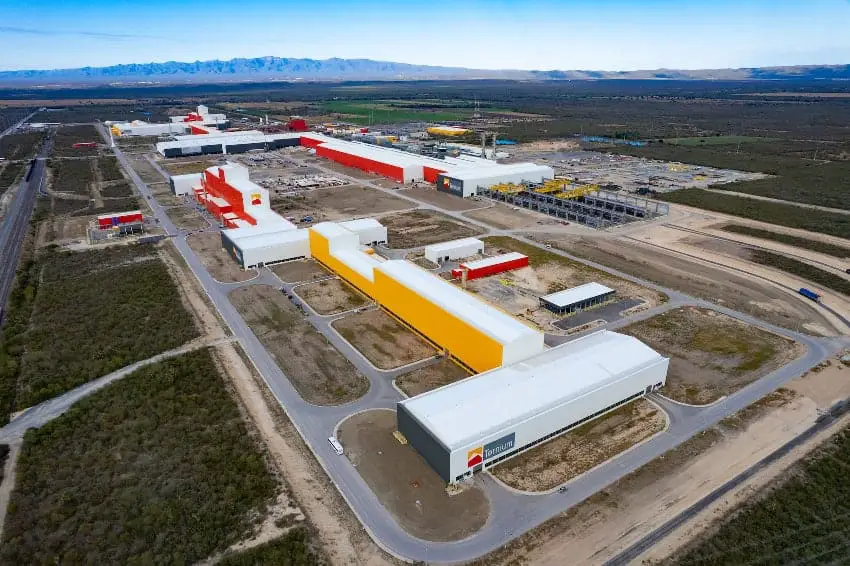
[ad_1]
Mexico needs to act quickly to take full advantage of the nearshoring opportunity, according to Foreign Affairs Minister Alicia Bárcena.
Speaking at a foreign trade conference in Mexico City on Tuesday, Bárcena expressed doubt that the opportunity is well understood in Mexico and warned that countries such as Vietnam could position themselves as more attractive options for companies that are seeking to relocate, especially from China.

“I wonder whether in Mexico we’re [fully] understanding this window of opportunity,” said the former executive secretary of the United Nations Economic Commission for Latin America and the Caribbean.
“Sometimes I feel that we aren’t, and I say it to you sincerely from my vantage point, which is the Ministry of Foreign Affairs. I believe that we’re not understanding the possibility of what nearshoring means, … what the United States Secretary of Treasury Janet Yellen calls friendshoring,” Bárcena said.
“If we don’t put our skates on,” the foreign minister warned, Vietnam – instead of Mexico – “could become one of the most competitive countries that offers incentives [to foreign companies].”
The federal government last month announced tax incentives aimed at boosting investment in Mexico, but some experts believe that policy changes in areas including energy and water are needed in order to capitalize on the nearshoring opportunity.

Security problems in some parts of the country are also seen as a barrier to greater investment.
Rolando Vega Sáenz, president of the Mexican Business Council, told the foreign trade conference that a strong rule of law and greater development of the clean energy sector are crucial to attracting more investment.
While Mexico could undoubtedly become a more attractive destination for foreign firms by effectively addressing problems such as insecurity, Bárcena said that the country already has a better opportunity than others to lure manufacturing companies due to its proximity to the United States – the world’s largest economy.
Geographical location, competitive labor costs and the availability of educated and experienced workers are among the main reasons why Mexico is able to attract such firms.

One way Mexico could better position itself as a nearshoring destination, Bárcena said, is by working to combat the lingering effect of former United States president Donald Trump’s negative rhetoric toward the country.
“We need United States lawmakers from both parties to come to Mexico and see the reality of our country. We’re not the dangerous border [region] Trump has described [us as],” she said.
Bárcena didn’t cite any additional ways in which Mexico could seize the nearshoring opportunity, but stressed that the opportunity will be “brief” and that there is “great competition” from other countries that are also seeking to attract foreign capital.
In addition to proximity to the U.S., the foreign minister mentioned the as-yet-incomplete Isthmus of Tehuantepec trade corridor – which will include a modernized freight and passenger railroad linking the Pacific and Atlantic oceans – as a factor that makes Mexico attractive for foreign investment.
“It will be a first class crossing,” she said of the trade corridor, which will also include a chain of 10 industrial parks between Salina Cruz, Oaxaca, and Coatzacoalcos, Veracruz.
Foreign direct investment (FDI) in Mexico is on the rise, but some analysts have expressed concern about the fact that only 8% of the US $32.9 billion dollar figure recorded in the first nine months of the year came from new investment.

Gabriela Siller, director of economic analysis at Mexican bank Banco Base, said earlier this month that the data on new investment indicated that Mexico wasn’t taking full advantage of the nearshoring opportunity, while financial reporter David Páramo bluntly declared: “Mexico, in these times of relocation, … should be attracting a lot more foreign direct investment.”
Mexico could be on the crest of the nearshoring “wave” but is only “in the middle,” Páramo said, describing Mexico’s performance in attracting FDI as “mediocre.”
Speaking on Imagen Televisión, he noted that more money flows into the country in remittances than in FDI. However, that could change in 2025, according to Santander México, a subsidiary of the Spanish bank of the same name.
Alan Alanís, a Santander director, said that about 120 foreign companies – including Tesla and Ternium – have made investment announcements totaling some US $44 billion in 2023, with the money set to flow into Mexico in the coming years.
“We’re just seeing the beginning … of nearshoring. With these 120 companies that have made announcements, we believe we should be seeing double [the amount of FDI] next year,” he said.
Alanís said that foreign investment could even exceed remittances in 2024, but Santander is taking a slightly more cautious approach in making its prediction that 2025 will be the year that occurs.
With reports from Milenio, El Universal and El Financiero
[ad_2]
Source link